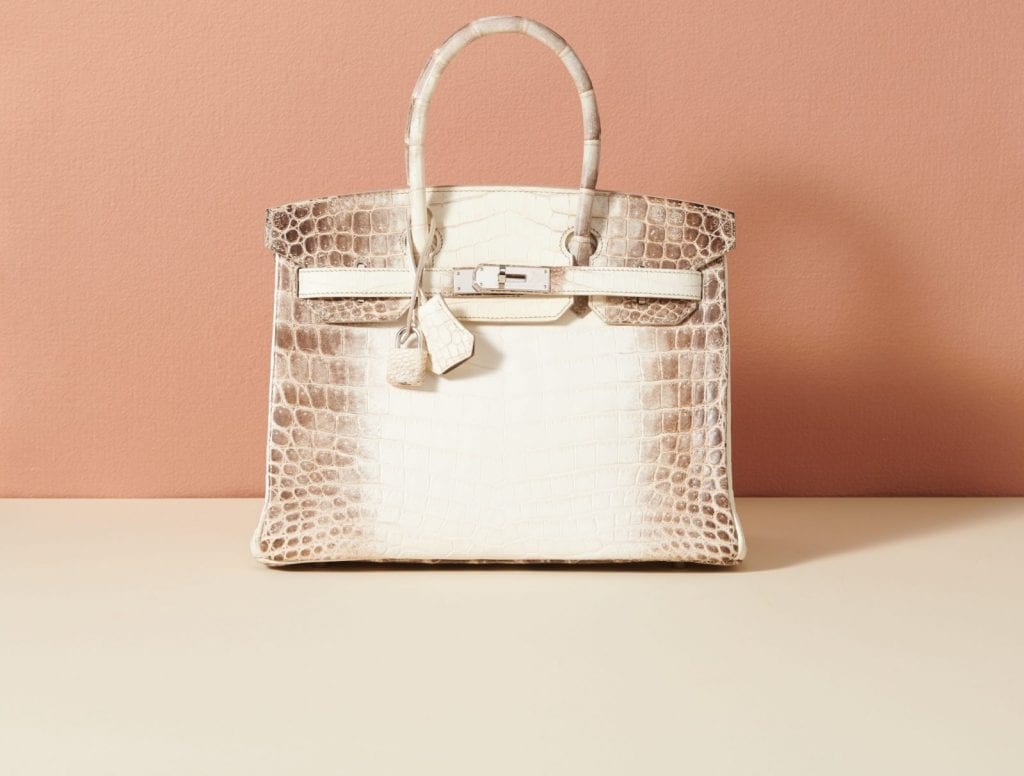In the 40 years since its debut, the Hermès Birkin has become more than a handbag. It is a symbol of exclusivity, a financial asset class, and a status marker with a vigorus secondary economy. But while devoted collectors and resellers, alike, celebrate the soaring valuations and resale profits tied to the instantly-identifiable handbag, Hermès appears to be growing genuinely uneasy about the direction that its most iconic product is taking, particularly when it comes to the resale market.
During the company’s Q2 2025 earnings call this week, Hermès CEO Axel Dumas struck an unusual tone of concern, pointing to the flourishing secondhand market – where Birkins routinely trade for multiples of their retail price – as a direct threat to the company’s ability to serve what he described as its “real customers.” Speaking to investors and analysts, Dumas addressed the Birkin market, saying, “Sometimes we have false customers come to our stores to buy them, to resell them, and they prevent us from serving our real customers. That is a real cause for concern for us.”
“So, I’m not at all happy to see this development of new bags that are sold in the secondhand market,” he continued. “I’m not happy, and it doesn’t make me feel in a good mood.”
A Market Growing Beyond Hermès’ Control
Resale has long been a byproduct of Birkin scarcity, but Dumas’ latest comments suggest Hermès may view the phenomenon as increasingly incompatible with its long-term brand strategy. The company has cultivated a culture of patience, relationship-building, and craft-based luxury. Yet in parallel, the Birkin has become a high-yield investment vehicle and social media flex – often accessed through intermediaries rather than through the brand, itself.
That contradiction appears to be wearing thin.
The Birkin’s aftermarket trajectory is well documented. With starting retail prices around $12,000, resale values often exceed $30,000 and can easily climb into six figures. In the most extreme example, a one-of-a-kind Birkin once owned by Jane Birkin sold in a Sotheby’s auction in July for $10 million. The resale prices of these coveted bags figures demonstrate the Birkin’s ability to outperform traditional financial assets, but they also underscore how far the product has drifted from Hermès’ direct control.
For Hermès, the robust resale market for Birkin bags – and Kelly bags, too – exposes a deeper problem: According to Dumas, opportunistic buyers are increasingly gaming the system, which distorts both access and brand meaning.
But is that really what is going on here? What might be the more pressing issue, which Hermès management is not explicitly saying, is that Hermès is grappling with the fact that it has little (if any) control over the downstream conditions under which its most valuable products are bought, sold, and experienced. Once a Birkin leaves the boutique, Hermès has no say over who resells it, how it is marketed, at what price point, or in what context. This lack of oversight poses a multi-layered threat to a brand that it depends on discretion, selectivity, and near-total narrative control.
Unlike other luxury goods that thrive on visibility and accessibility (labels like Louis Vuitton and Gucci, for instance, operate on a relatively mass distribution model), the Birkin is a luxury product defined as much by how it is acquired as by what it is. The brand’s highly selective, relationship-driven selling model – where customers must prove loyalty and taste over time before being offered a Birkin – turns each sale into a symbolic gesture of trust and belonging.
In contrast, the resale market strips away that entire process, transforming the bag into a transactional commodity often paired with speculative hype or status-chasing flash.
That breakdown in messaging is not merely aesthetic; it is strategic. Hermès’ ability to preserve the aura of the Birkin depends on controlling both the narrative and the environment in which it is sold. If bags are widely available through third-party sellers, auction houses, or resale platforms, with none of the Hermès experience, the brand’s finely calibrated value system begins to erode.
There is likely also a financial dimension to this concern. The resale economy built around the Birkin generates billions in annual volume – none of which flows back to Hermès. Every time a reseller flips a Birkin for double or triple its original price, the brand not only loses the chance to deepen its relationship with an authentic customer but also forfeits customer intelligence and lifetime value, as well as significant revenue it could potentially capture through direct or certified secondary channels.
In this context, Dumas’ comments about “false customers” and not being “in a good mood” take on a more strategic subtext. The real issue is not simply who gets to own a Birkin, but who controls the experience, the messaging, and the monetization of that ownership. For Hermès, whose brand equity depends on rigorous consistency, that is a battle it cannot afford to lose.
Where Does Hermès Go From Here?
Despite the headwinds, Hermès continues to post enviable numbers. In Q2 2025, the company reported a 9 percent year-over-year sales increase, largely powered by its handbag pillars: the Birkin, Kelly, and Constance. But for a brand so famously committed to control, craftsmanship, and quiet luxury, the runaway resale market poses an existential question: how do you preserve myth in the face of market forces you cannot regulate?
For now, Hermès appears unwilling to compromise. It continues to treat its most sought-after bags as the apex of artisanal production, not as speculative commodities. But as the resale market grows louder, richer, and more professionalized, the brand’s discomfort is becoming harder to ignore.
Dumas may still offer a wry smile when discussing “false customers” and “not being in a good mood,” but the subtext is clear: Hermès is more than mildly annoyed. It is starting to view resale not just as a nuisance – but as a structural threat to the integrity of its entire ecosystem.













